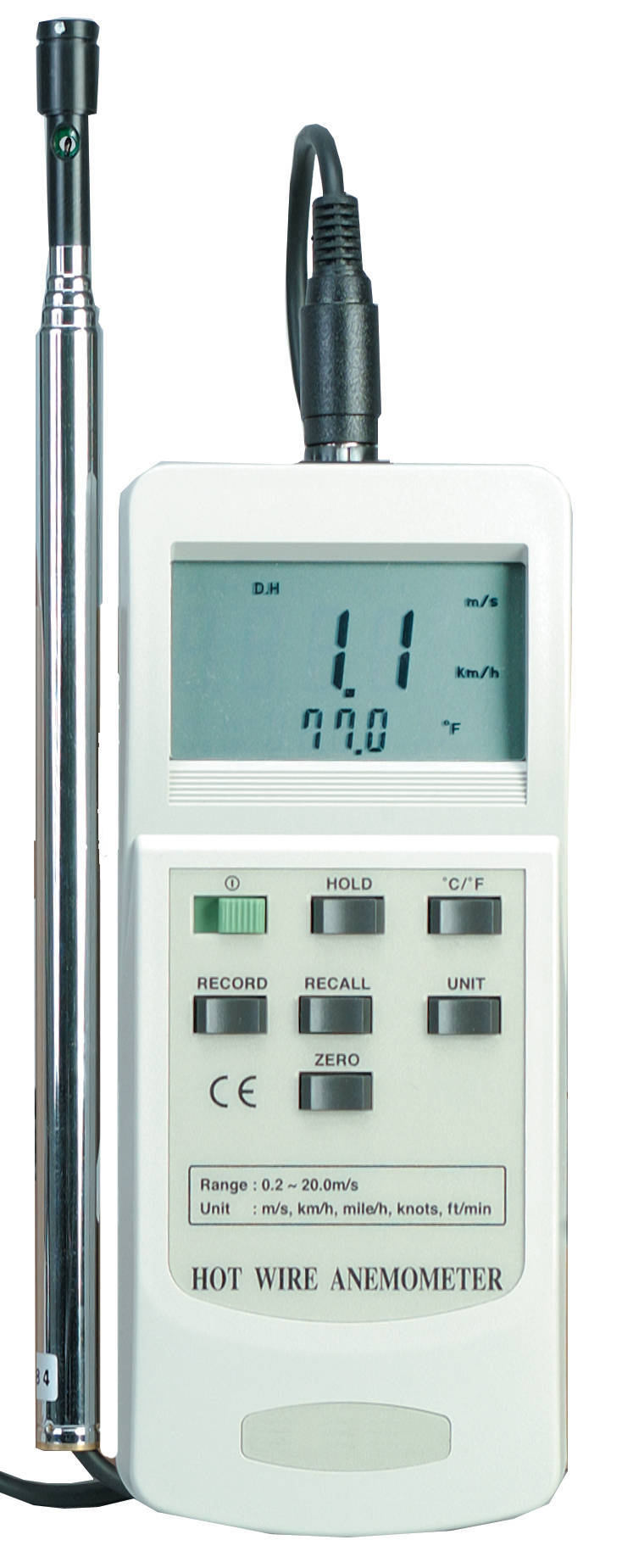

The impact of natural convection, directional sensitivity and dynamic response of the anemometer are modelled. The important error sources associated with measurements using low velocity thermal anemometers incorporating an omnidirectional velocity sensor (LVTA) are identified and quantified. Recent works looking for temperature fluctuations measurements in thermoacoustic systems (Cleve, et al., 2017) compare CTA and LDA, with the in-house fabrication of CVA (Constant Voltage Anemometer), with three Aspect ratio (AR = L / D) is an important parameter, related to probe´s sensibility, high values implies measurement stability (low gain amplifier), while low AR values implies in noise input into measurements typical values are 200 < AR < 800 (Bruun, 1995), while 160 < L < D < 310 are indicated for heat loss minimization from wire to the prongs (Anderson, et al., 2003). Design probe has the following wire dimensions, see Figure 1: Ltotal = 0.200 m (20 mm filament length, 10 pieces), DTungsten = 0.15 mm, DConstantan = 0.08 mm, thus resulting in (L / D)Tungsten ~ 1333 and (L / D)Constantan ~ 2500. Total electrical resistances are: RW,Constantan = 26.6 Ω and RW,Tungsten = 2.0 Ω, each one connected to a Wheatstone bridge with 30 Ω or 15 Ω resistors (R1, R2 and R3), respectively for Constantan and Tungsten.
HOT WIRE ANEMOMETER SERIES
It was built in a phenolic plate, with wires mounting in a series configuration thus probe´s electrical resistance corresponding to the sum of each filament resistance (10 pieces) it increases the electrical power dissipated for the set.

Shows a skecth for design and built device (probe dimensions and electrical circuit control), Wheatstone bridge electrical resistors are indicated as R1 (potentiometer for bridge balance), R2 and R3, while RW is probe´s electrical resistance. Thus better indicated for CTA design e) Tungsten wire achieves constant temperatures for lower speeds, thus better

(Constantan, 1.5 and 1.7 m.s-1) approach to HWA-CCA behavior with constant ΔT c) Tungsten filament presentsīetter behavior than Constantan, in low speeds (< 1.0 m.s-1) d) Constantan achieves higher temperature variation, Test range conditions, approaching an HWA-CVA behavior b) The temperature achieved in higher airspeed Main conclusions are: a) Electrical voltage is practically constant in the HWA, and data acquisition through Arduino. In-house fabrication intends to have a low-cost device in comparison to commercial HWA prototypes are built with Constantan and Tungsten filament materials, providing measurements when operating Thermal anemometry is an appealing option, once its able to measure low speeds conditions and itsįluctuations, for velocities (as in turbulent flow) or temperature (as in magnetic field interference). Fluid velocity measurement systems with low-cost are desired in industry and scientific researchĪpplications.


 0 kommentar(er)
0 kommentar(er)
